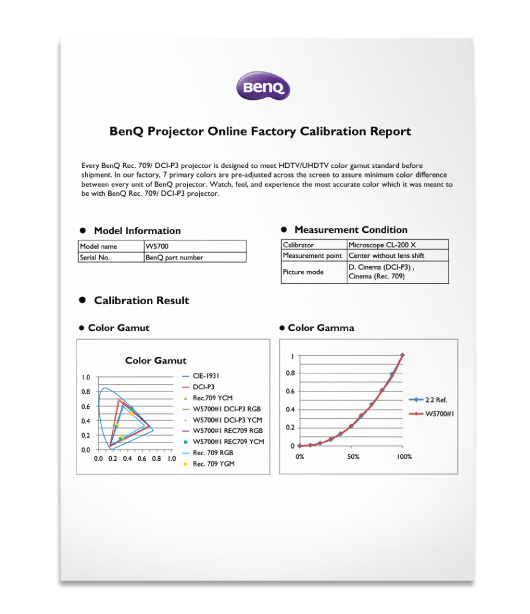Contrast is essential in the proper rendering of a movie. The ability to see small detail and movement is dependent on small brightness differences from one pixel to the next – such as seeing the dark brown mouse whisker against a lighter brown desert background.
Here again, the Epson specification is higher than the BenQ, but both projectors get high marks for contrast performance by third party reviewers. While the ANSI measurement for contrast is a checkerboard square with white pixels next to dark pixels, the projector industry measures overall white screen and black screen – which prompted Projector Central to remark that “comparison between contrast ratio claims from different manufacturers, you shouldn't take these numbers at face value, since there is no industry standard for reporting contrast ratio.
To achieve the type of detail needed in high-resolution 4K movies, the BenQ projector uses a combination of the high fill factor of the DLP chip (it can control over 90% of the light on each pixel), its Smart Eco lamp technology which reduces the light for dark scenes, and a dynamic iris on the lens to sharpen the contrast differences between light and dark pixels on the screen. Epson uses a combination of polarizing filters and dynamic iris to reduce the stray light.
Which approach is better? While the Epson has excellent contrast, the ProjectorReviews website noted that “when viewing HDR content, on a dark scene, the BenQ produces deeper blacks on some of those scenes than the Epson.”
HomeTheater HIFI spent a lot of time looking different scenes of Planet Earth , commenting that “…the Cities episode was a great test of black levels which looked impressive. It’s not quite as deep as the best LCoS projectors I’ve seen, but it’s startlingly close.
Contrast is not an issue here; any viewer would be satisfied”. While critics may argue over which is approach is better, and both projectors appear to deliver the quality of detail, customers are looking for in premium home theater projectors.

